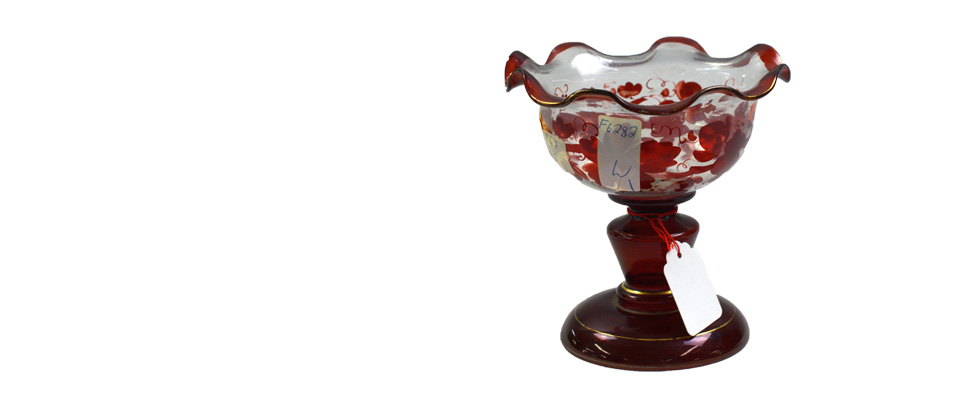
All and Sundry Stickers – Traces of the “Kunst und Antiquitäten GmbH” on objects in the Deutsches Historisches Museum
Christopher Jütte | 10 April 2024
In the collections of the Deutsches Historisches Museum there are objects from the “Kunst und Antiquitäten GmbH” (Art and Antiques Company), whose stocks included works from private collections that had been confiscated in the German Democratic Republic (GDR). On the occasion of the International Day of Provenance Research, provenance researcher Christopher Jütte provides insight into the work of deciphering sticker codes in the attempt to find out where these objects came from.
The Kunst und Antiquitäten GmbH (Art and Antiques Company, KuA for short) was founded in the GDR in 1973 as part of the state-run department of Kommerzielle Koordinierung (Commercial Coordination, or KoKo). As part of the KoKo network of companies, the KuA exported from the time of its founding until 1990 numerous art and cultural objects from East Germany to the “non-socialist economic territory” with the aim of generating foreign currency. A considerable portion of the commercial aggregate of the KuA came from the stocks of expropriated East German private collectors whose collections had been confiscated, often due to fabricated tax proceedings or bogus tax debts. Such objects were gathered in the main depot of the KuA in Mühlenbeck and exported from there. The KuA ended its export activity in November 1989, and the liquidation of the company began in January 1990. The museums in the GDR were first in line to acquire the remaining stocks stored in Mühlenbeck for their collections. Among those museums who seized this opportunity was the East German history museum Museum für Deutsche Geschichte (MfDG), which purchased some 600 individual objects in spring 1990. With the reunification, the collections of the defunct MfDG – including the KuA objects – were transferred to the Deutsches Historisches Museum (DHM).
The fact that there is reason to suspect that the KuA objects came from unlawfully confiscated art and cultural collections makes provenance researchers sit up and pay attention. This article undertakes to document the traces left by the KuA on the objects that are now part of the collections of the DHM.
Stickers in various forms and colours: a stocktaking
The KuA furnished the objects it dealt with (e.g., paintings, vases, bowls, etc.) with different kinds of stickers in various forms and colours. The stickers are labelled with combinations of letters and numbers that can indicate, for example, who first supplied the object and the ways it was acquired and then stored by the KuA. The deciphering of the coded inscriptions is a particular challenge and in many cases an arduous task, if not in fact impossible.
A closer observation of the objects in the DHM collections reveals that the KuA stickers are not always on the back or under side of the objects, but sometimes on the front. The painting “Arrest of the French Lieutenant Le Clouet, Adjutant of Marshal Ney” has two stickers on the front side of the painting’s frame (Ill. 1).
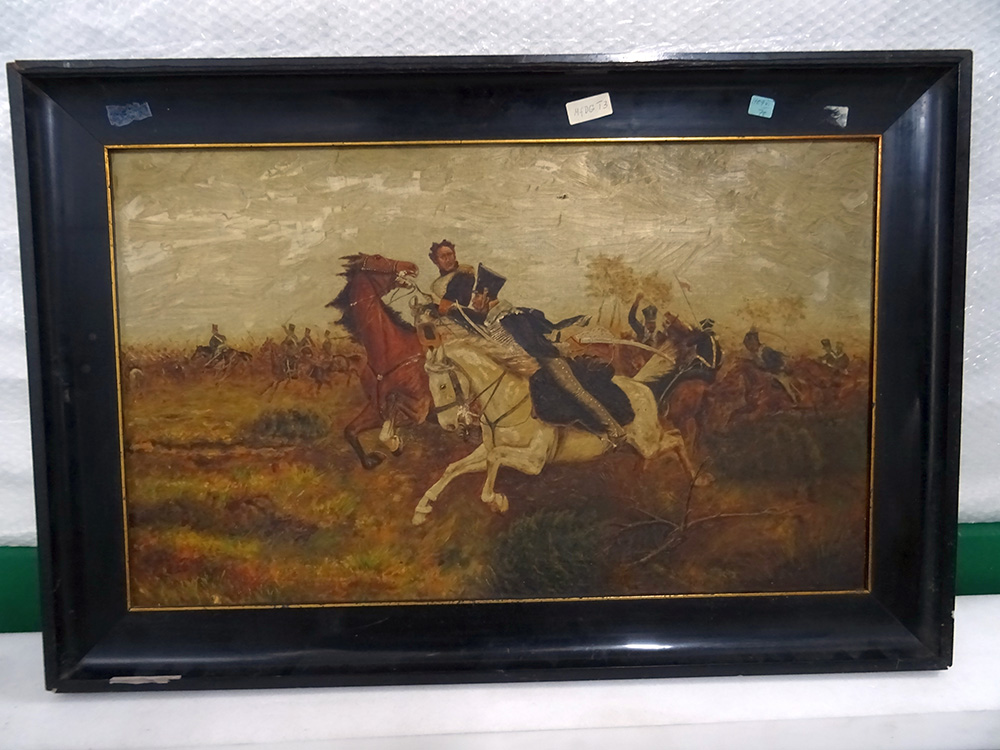
Remains of a further sticker and bits of adhesive suggest that two other labels were once there. The smaller of the two existing labels on the frame is blue and contains the handwritten note “HO9VI 70” (Ill. 2). The second sticker is white, rectangular, and labelled “MfDG T3”. Here the purchaser is named, in this case the East German museum MfDG.
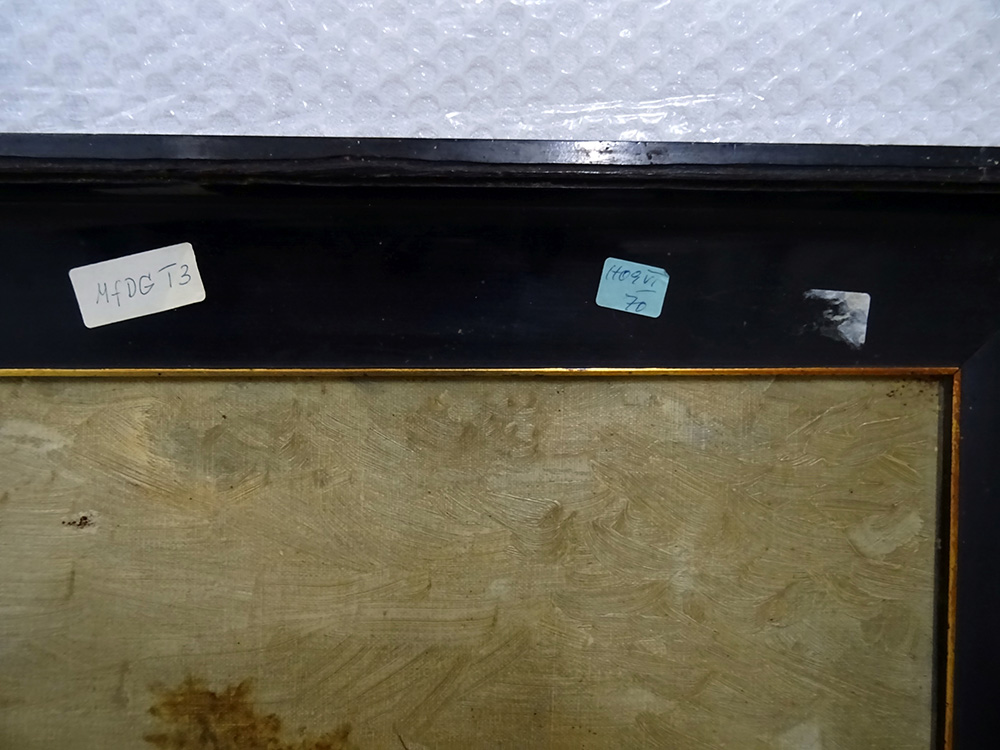
In the case of a glass bowl, the labels were placed with no regard for the object. It contains three different stickers (Ill. 3).
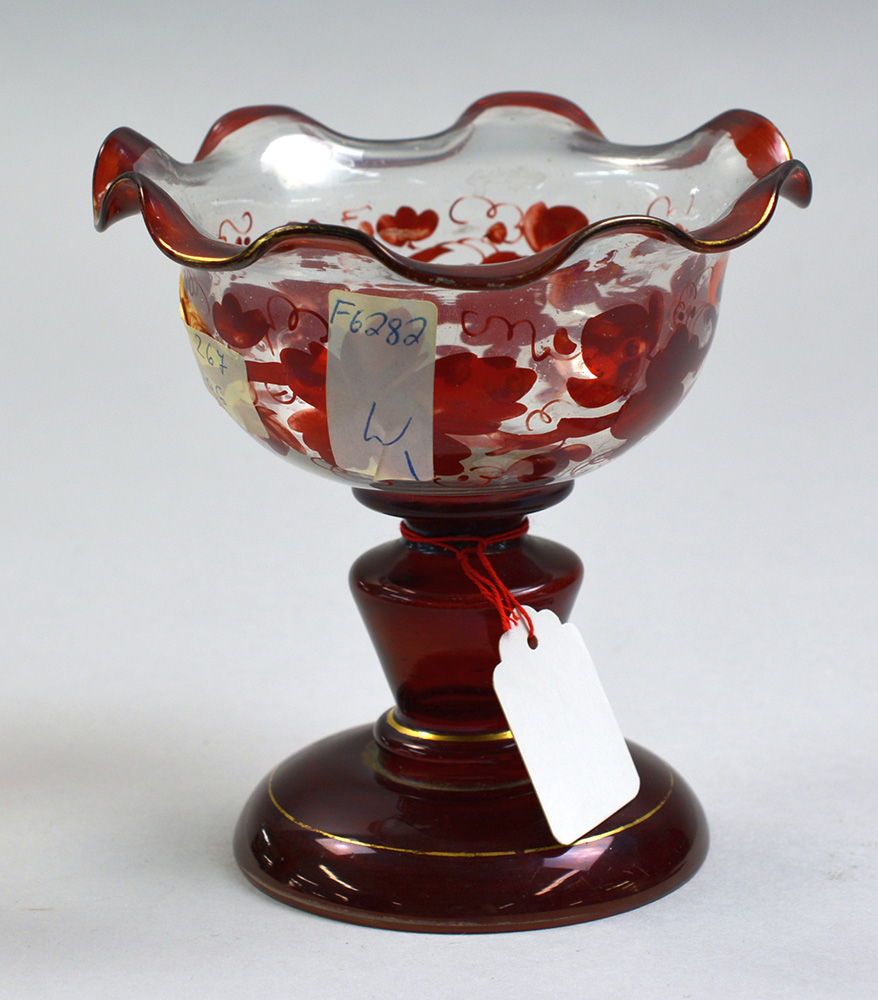
Two of them are on the outside of the bowl, the third sticker on the inner side (Ill. 4-6).
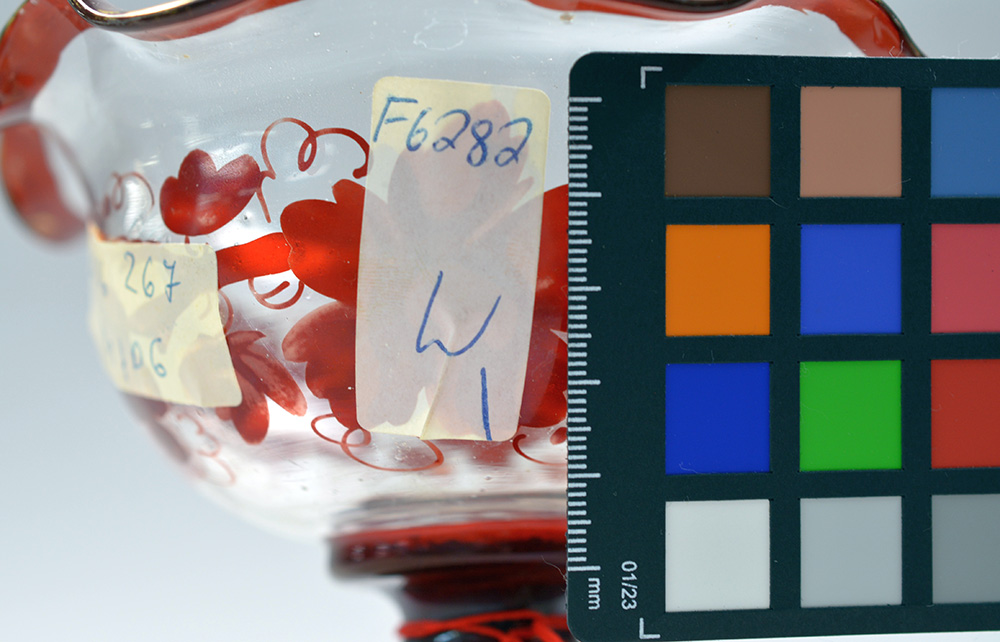
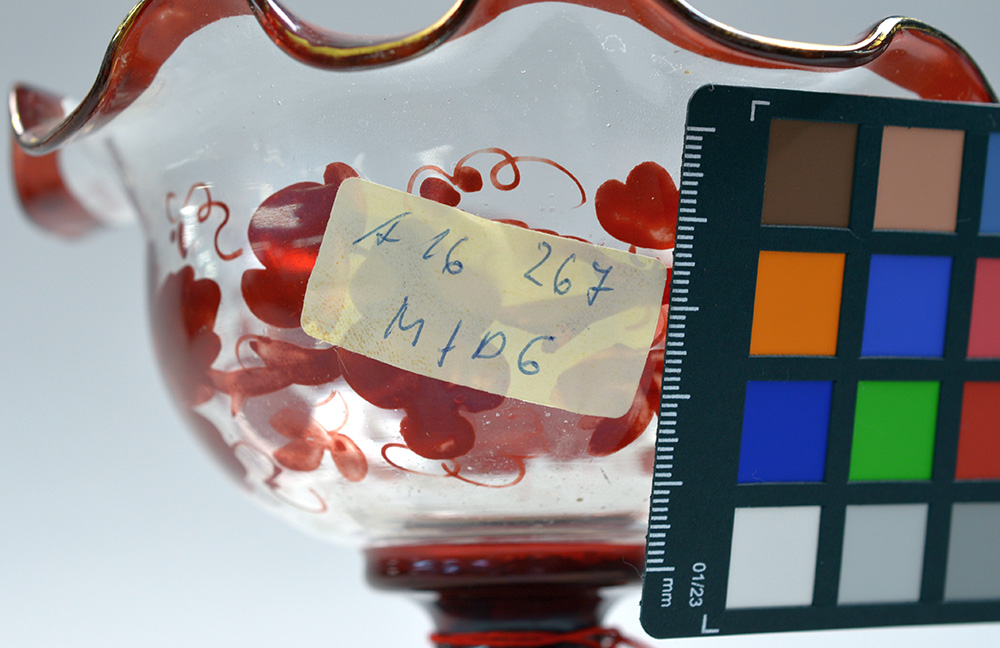
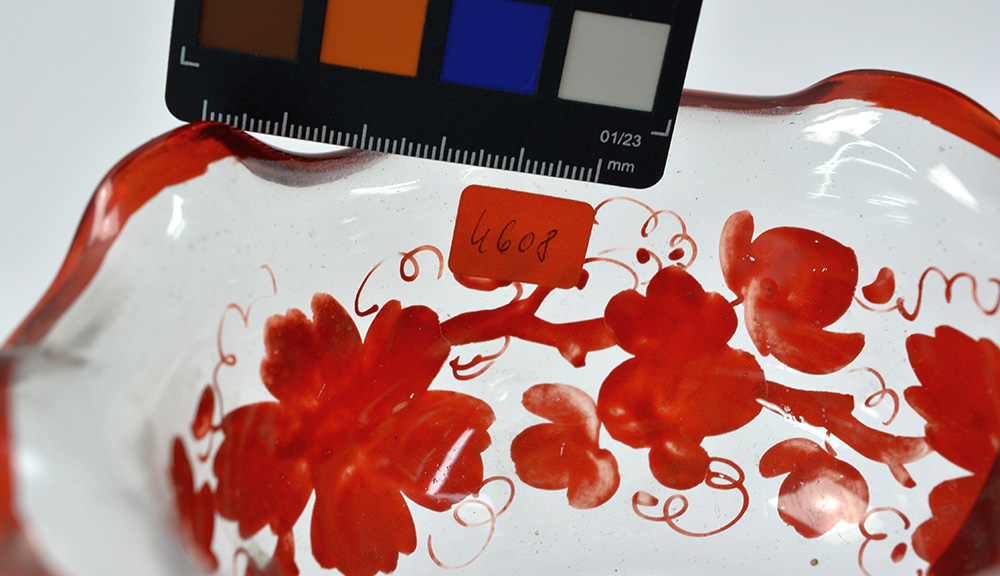
Ill. 4, 5, 6: KuA stickers on the outside and inside of the MK 90/135 shell.
The pair of vases also contain KuA stickers (Ill. 7). The remains of such labels and traces of adhesive are also found on each of the vases (Ill. 8). One of the labels has remains of an inscription with Roman and Arabic numerals (Ill. 9).
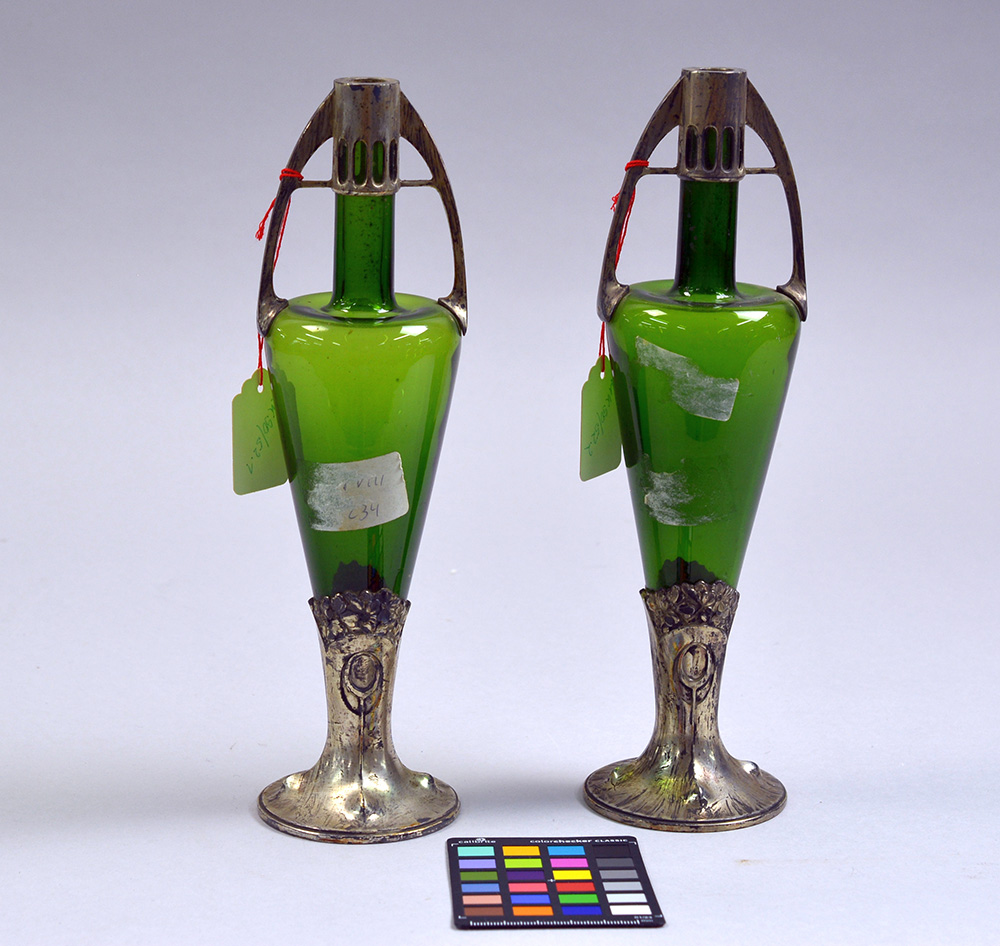
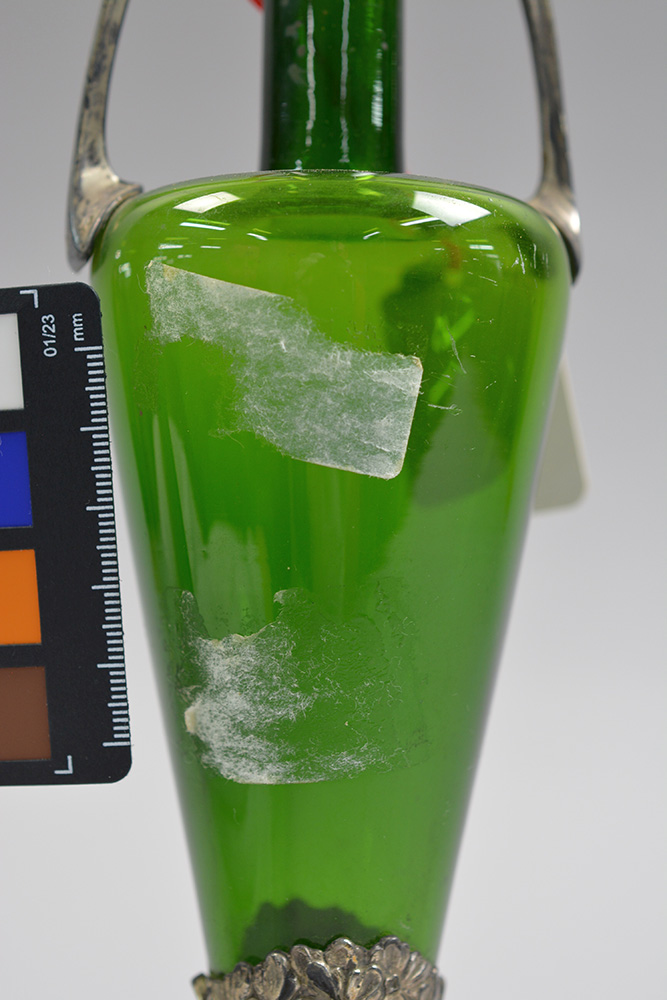
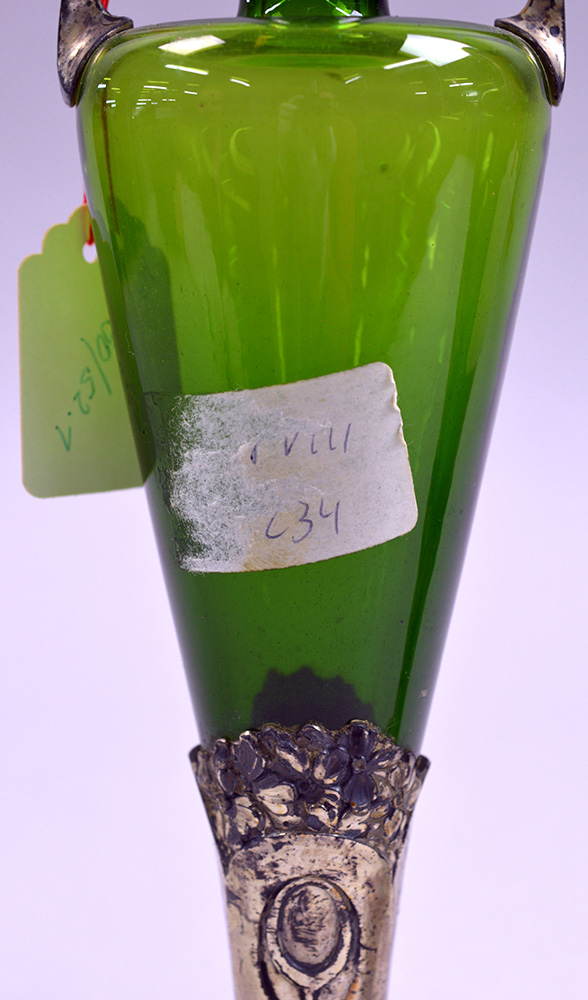
Ill. 7, 8, 9: Pair of vases, glass, metal, 1900 (c.), inv. no.: MK 90/52.1-2.
The painting “Hamburg Port” (Ill. 10 + 11) has a sticker on the back.
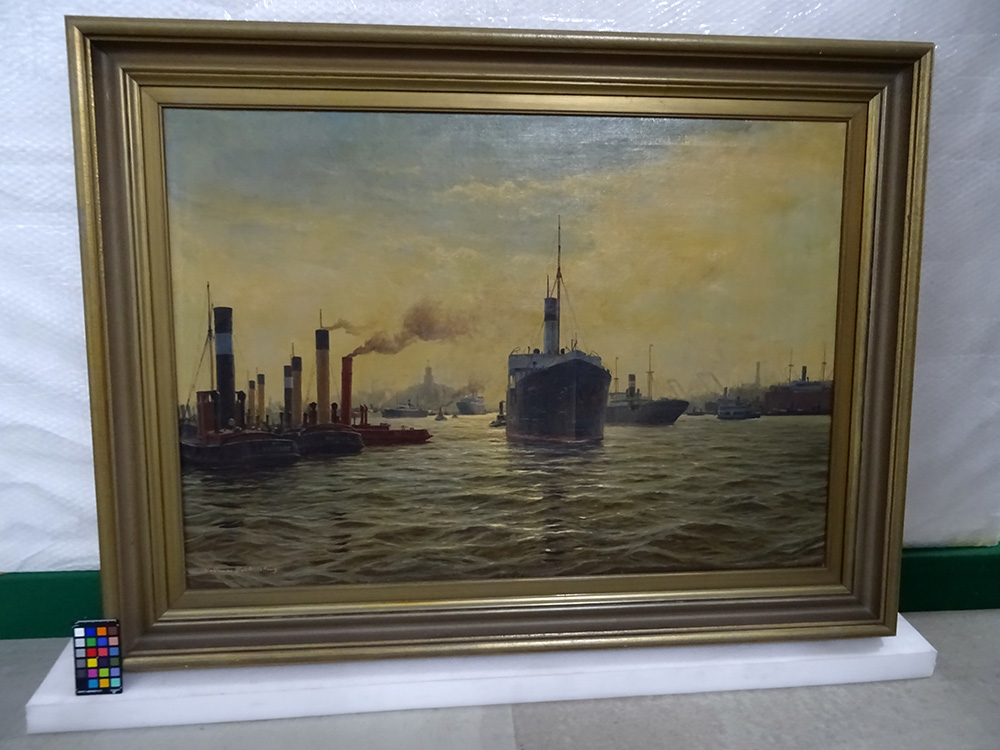
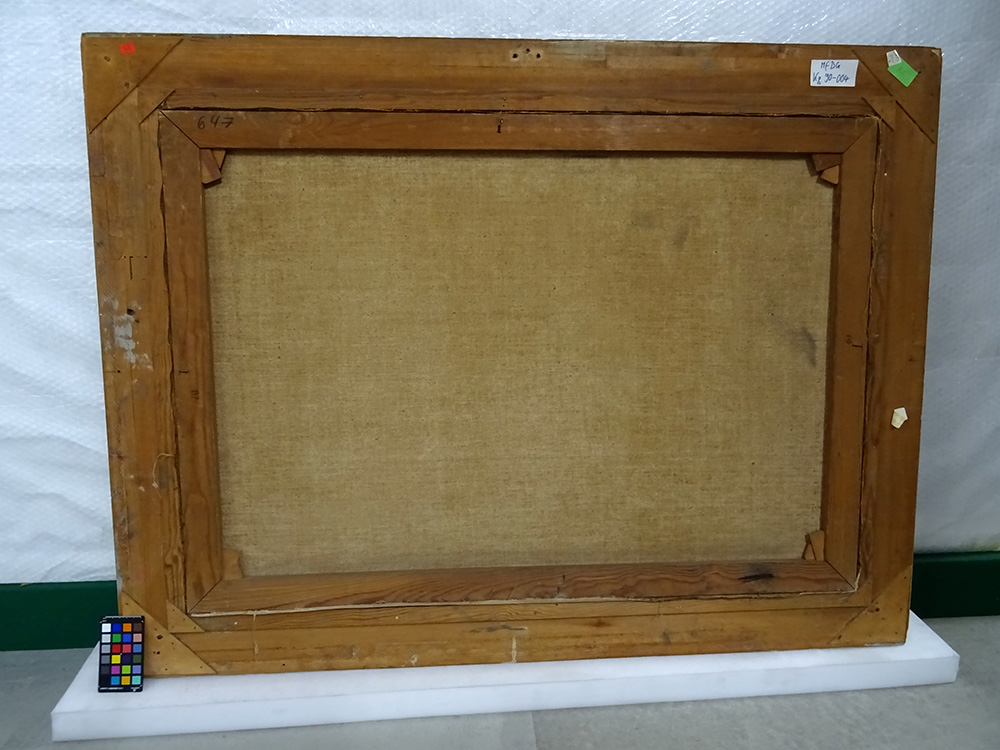
Ill. 10+11: Hamburg Harbour, oil on canvas, 77 x 99 cm, Waldemar Schlichting, 1970 (before), inv. no.: Kg 90/4. Front and rear view.
In the upper left corner of the frame there is a rectangular, red sticker with the handwritten number “33”. On the upper right corner there are two further stickers, a green one with the number “35” and a white one inscribed “Bi 1989 627” (Ill. 12).
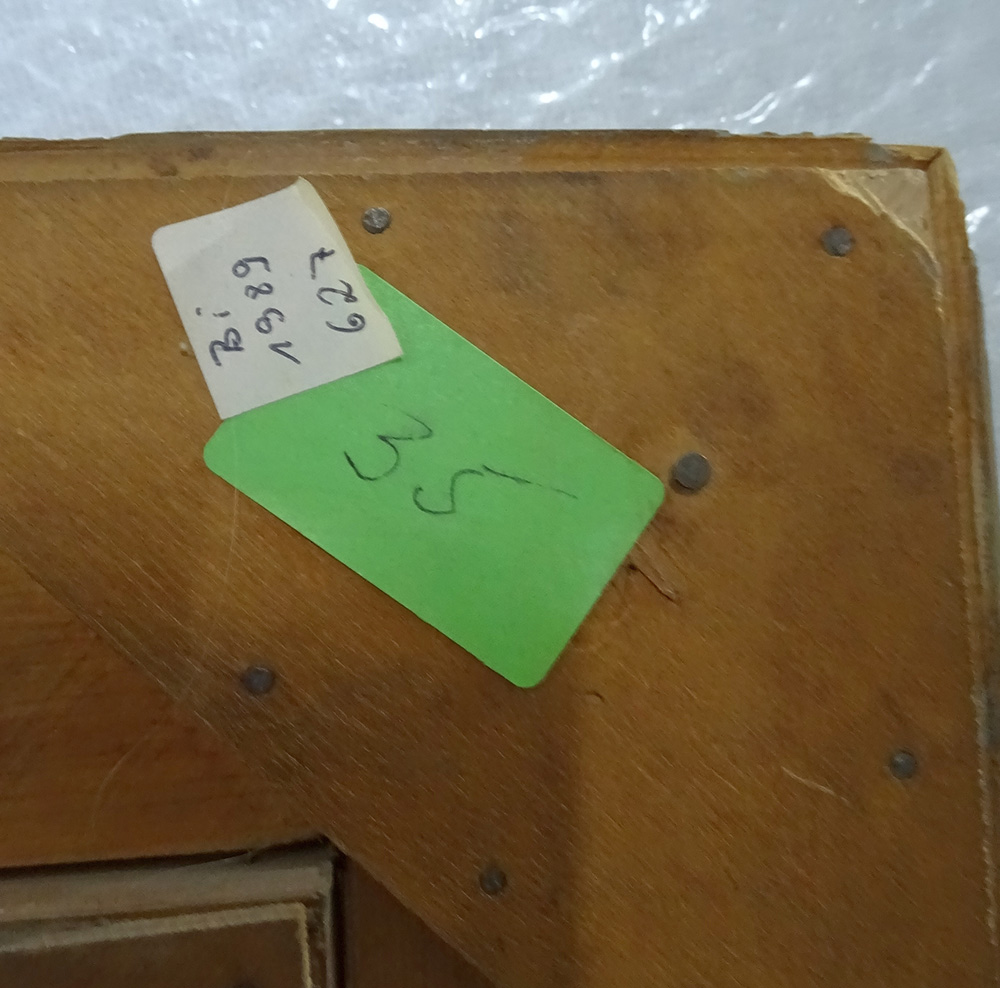
An example of an attempt to decipher the code
But how can we determine the meaning of the combination of numbers and letters? An initial aid in deciphering the code came from Dr Bernd Isphording in February 2023 for the Federal Archive.[1] On this basis the abovementioned small blue sticker labelled “HO9VI 70” was used as an example in deciphering the inscription (see Ill. 2). “HO” probably stands for Handelsorganisation, the state-run retail sales organisation, and could possibly refer to HO-Gebrauchtwaren Berlin, which sold used goods. But the rest of the code does not seem to coincide with other documented acquisitions from HO-Gebrauchtwaren Berlin. Those acquisitions had HO + Arabic numerals in the codes.[2] Instead, the relevant sticker here in the museum uses a notation found in the state-run antique sales company VEB Antikhandel Pirna, one of the most important suppliers of the KuA. As a rule, the VEB Antikhandel used a combination of Arabic and Roman numerals as well as letters. They were separated by empty spaces and dashes. The code consists of the initials of the buyer in two letters, the year of the purchase in Arabic numerals (often only one number), the month of the acquisition in Roman numerals as well as the serial number in Arabic numerals. The sticker on the painting seems to conform to this pattern and could therefore be deciphered: HO [= abbreviation of the buyer] 9 [= year of the acquisition, one numeral] VI [= month of the acquisition, here June] 70 [serial number of the acquisition].
At the same time, it should be noted that other companies also used the same notation as the VEB Antikhandel Pirna, so that even the HO-Gebrauchtswaren Berlin could have been the supplier.[3] Final confirmation of the provenance of the KuA objects can only be obtained if the notations on the stickers are substantiated through invoices or delivery records.
In any case, this example shows the difficulties in deciphering the complex KuA codes. The stickers are, however, an important factor in offering at least a chance to determine the original owners of the objects.
[1] Isphording, Bernd: Hinweise zur Aufschlüsselung von Aufklebernummern der Kunst und Antiquitäten GmbH im Bestand BArch DL 210, online: https://www.bundesarchiv.de/DE/Content/Downloads/Meldungen/2023-03-01_neues-hilfsmittel.pdf?__blob=publicationFile (Accessed: 26.03.2024)
[2] Ibid., p. 14
[3] Ibid., p. 4
 © Thomas Bruns |
Christopher JütteChristopher Jütte is a historian and a member of the research staff at the Deutsches Historisches Museum. He specializes in the Soviet Occupation Zone (SBZ) and the GDR. |